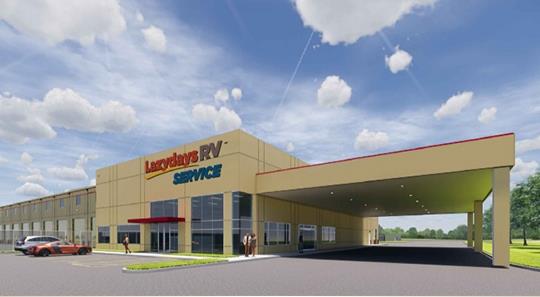
Watch some from the comfort of your motorhome
Rewritten by Joseph Garnett, Jr. - From the Archives
September 14, 2015
Naturally, when you are searching for answers on any subject, it’s always the best to find a person with experience. When it comes to maintaining your RV or motorhome, there are two kinds of experts you’ll meet – either the person will be a certified technician or someone who has owned an RV and has experienced many issues before.
Perhaps, the difficult part with speaking to a technician is that they don’t always know how to say things for the not-too-educated to understand. A full-timer has his own RV and, of course, more experience. Bill Whetstone is that kind of guy. He has plenty of maintenance tips to help you keep your RV or motorhome traveling smoothly down the road.
The following checklist, suggested by Whetstone, is a great place to start.
Oil Changes
Find the engine maintenance schedules in the owner’s manual and read about the recommended frequency of changing the oil. 3,000 miles, which is the old standard approach, may not be the best range for your vehicle. No matter if you drive your RV on long distance trips or just short getaways, you should change the oil at least one time during the year. Road warriors will require a lot more changes. The oil’s quality for optimal performance will be designated in the manual.
Coolant
Every part of the coolant system, which means the water pump, radiator, hoses and overflow tanks, will require some sort of maintenance. Regularly checking them should be a priority. After all, the last thing you would want is for the temperature gauge to start rising into the red as you are driving uphill. Using proper coolant in the system helps keep the temperature down. However, bring along an extra gallon should you have any issues.
Air Filter
Before each trip, it is necessary to check the air filter. It may need to be cleaned or changed. If you are going to be traveling for a lot of miles on dusty roads or near the beach, the filter may need cleaning or changing more often. Dust and sand can cause nightmares under the hood.
There are two types of air filters, washable ones that can be reused and the traditional paper ones that are disposed. It is important to remember to coat the reusable filter with the special oil they come with before installation. Manufacturers say these reusable filters help the engine run better by providing less air flow restriction. So, if you are going to be travelling on a lot of dusty roads, reusable filters may be the way to go.
Fluid and Filter for Your Transmission
Since transmissions don’t require much maintenance over a long period of time, they often get forgotten. Forgetting to check the fluid and filter, however, will result in a hefty price when there finally is a problem.
Fuel Filter
Your owner’s manual will also give you information on the fuel filter and when it should be replaced. A good rule to follow would be to change the filter at least once a year, since most people will not drive the recommended 20,000 miles. One chassis manufacturer, Cummins® encourages changing the fuel filter when you change the engine oil. Using this method will help you remember to check the fuel filter.
Additives
Filling the fuel tank and adding a stabilizer is good practice, if you plan to store your RV or luxury motorhome for a long time. A full tank eliminates air pockets. Air pockets can help cause condensation inside the tank and then water mixes with the fuel. Moisture is the enemy to any of the internal parts of your engine.
Belts and Hoses
Belts and hoses are designed to last a long time. It is important to keep checking them anyway. Inspecting them is good maintenance practice. Besides, there is nothing like a busted hose or belt to spoil a trip. At least once a year take a look for cracks in the hoses near the bends. If your belt is worn, change it when the oil is changed. Sometimes, it is best to hang on to the old belt, because a new belt may be harder to find depending on where you are.
If you are a person who likes getting your hands dirty and can do most of the recommended maintenance this checklist is going to be lots of fun for you. The only thing to be careful of is when a task may become too much for your skill level. Then, it is time to see a certified technician, like the service experts at Lazydays RV in Tampa or Tucson, who will have the right tools to do the job properly. Also, please be aware that some warranties that come with your vehicle insists on a technician making the repair.
The key to happy and safe travels on the road is making a priority to use the checklist items on a routine basis and schedule appointments with professionals to service your RV or luxury motorhome. It’s the best way to travel.
Share Your Experiences With Us
The RV Authority welcomes your input. If you have an idea for a blog article or would like to write and submit an article about your RV adventures, please click here to email us your suggestions or questions.



